How to Boot Your Computer from an External Hard Drive
Install an external hard drive
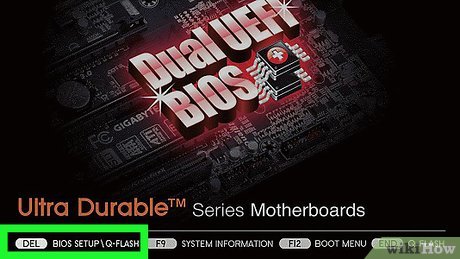
Locate your Windows computer's BIOS key (skip this step if you're using a Mac computer). If you want to set your computer to boot from an external hard drive, you need to access the BIOS control panel by pressing a key (usually a function key, such as F12 ) over and over as the computer boots. Normally, to know which key to use, you need:
Open a search engine (Google for example).
Enter the manufacturer name, computer model and the keyword "bios key" or "bios key".
Press ↵ Enter, select the appropriate result, and locate the computer's BIOS key.
You can also look at the manual or online documentation for your computer on the manufacturer's website.

Connect the external hard drive to the computer. Plug one end of the USB cable into an empty USB port on your computer, and the other end into an external hard drive.
On external hard drives there is usually an indicator light that will flash slowly or stay on all the time when the drive is connected.
On a Mac computer, you may need to purchase a USB to Thunderbolt 3 adapter if you don't have any USB 3.0 (rectangular) ports.

Format the hard drive if necessary. If the hard drive is not compatible with your computer, you may see a message saying the drive is corrupted or cannot be read. Reformatting the drive to match your computer's file system ( NTFS for Windows and Mac OS Extended (Journaled) for Mac) will allow you to access the hard drive.
When reformatting the drive, you should choose the exFAT file system so that Mac or Windows computers can also access the hard drive.
Depending on the type of data you will copy to the drive, you may need to format it again. For example, if you use the Live Linux tool to burn a Linux disk image to an external hard drive, the hard drive will automatically reformat again.
Reformatting will erase all data on the drive.
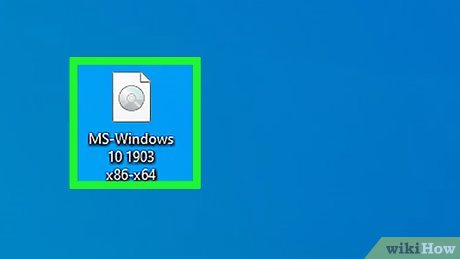
You need to make sure the drive has data. The computer cannot boot from an empty hard drive; In most cases, to boot from a hard drive, the drive needs a disk image file (or "ISO"). Files used to install Linux and Windows operating systems are examples of ISOs.
Some other examples of boot disk images include File History backups on Windows and Time Machine backups on Mac.
Third-party services like Clonezilla are also launch tools.
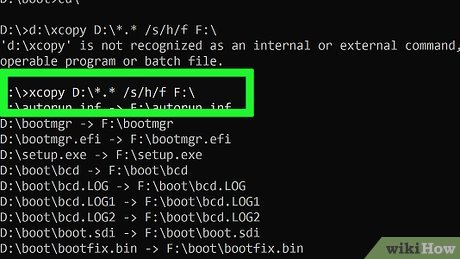
Copy the boot files to the external hard drive. Normally, you can click and drag the ISO file (or other files) and drop it into the external hard drive's window.
If you're using a program like the Windows 10 installation tool or LiveLinux to create an external boot hard drive, skip this step.
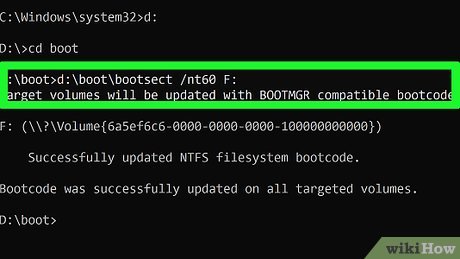
Create an external boot drive . The last step before you boot your computer from the external hard drive is to tell the computer to treat this as a boot entry. To do this, you can use Command Prompt (Windows) or Terminal (Mac).
If you are using a program like LiveLinux to burn the ISO file to an external hard drive, this drive will become the boot point in the process.
Boot the computer from an external hard drive on Windows
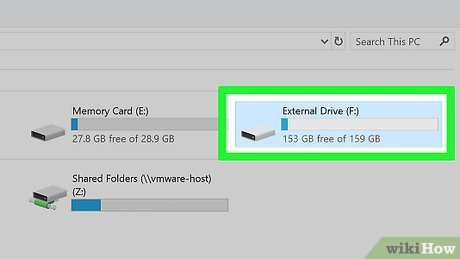
You need to make sure that the external hard drive is connected to the computer. The computer and external hard drive must be securely connected by cable, and the external hard drive must be placed in a convenient place and not resting on the cable.
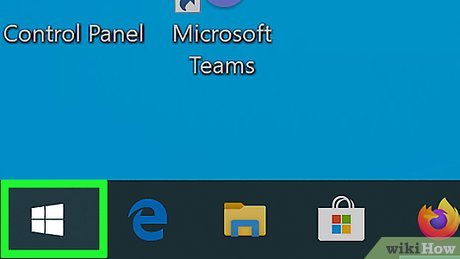
Open Start . Click the Windows icon in the lower left corner of the screen.
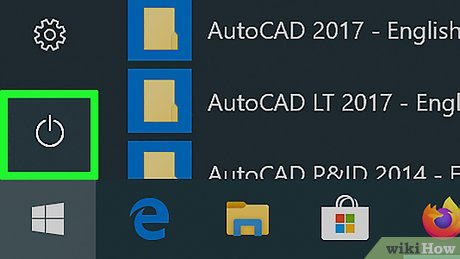
Click the "Power" icon in the lower left of the Start menu. A menu will pop up.
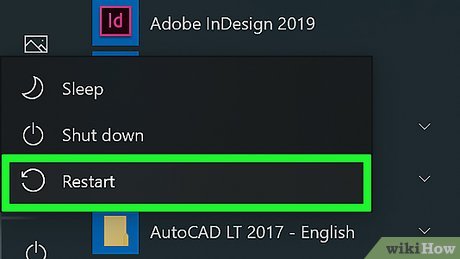
Click Restart in the pop-up menu. The computer will begin to reboot.
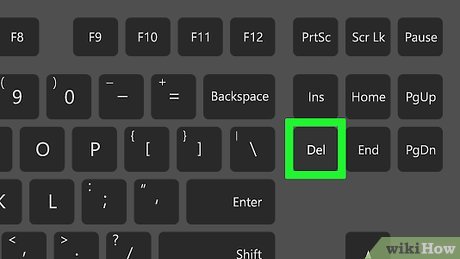
Start pressing the BIOS key. As soon as the computer screen turns off, you need to press the BIOS key specified by the manufacturer over and over again.
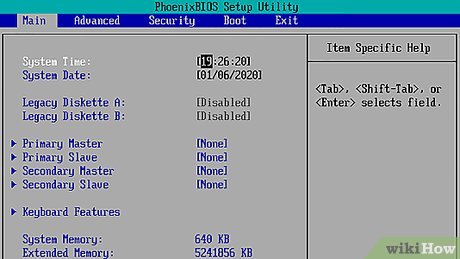
Stop pressing when BIOS appears. The BIOS is usually a minimalist interface with colored or white text on a blue or black background.
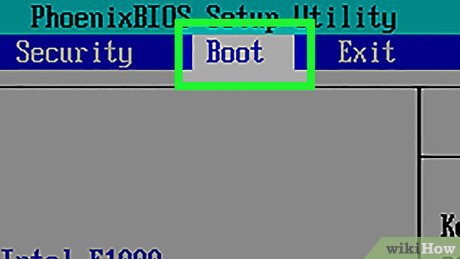
Find the "Boot Order" section. Use the right arrow key to navigate to the "Boot Order" tab, or look for the "Boot Order" option in one of the menus on the main page if you don't see the "Boot Order" tab.
You may need to select the Advanced tab first to see the "Boot Order" menu.
The BIOS on each computer is different, so don't be afraid to look for the "Boot Order" option somewhere in the menu.
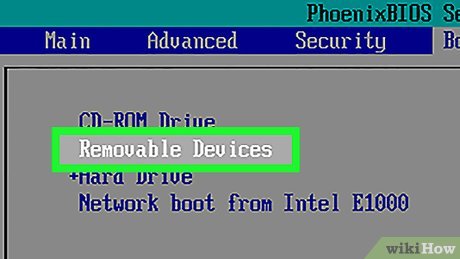
Select the external hard drive. Find the external hard drive's name or category name (such as External Hard Drive ) in the "Boot Order" list, then press the "down" arrow key until the external hard drive is selected.
In some cases, you can only select USB devices (or similar) in this menu. At that time, you need to make sure that the external hard drive is the only USB drive connected to the computer when restarting the computer from the external hard drive.
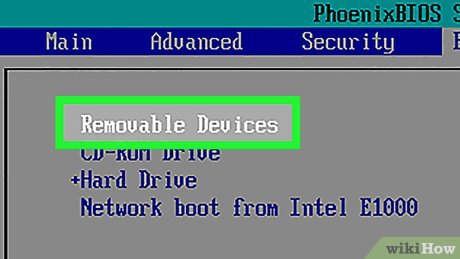
Move the hard drive to the top of the list. Press the "Move Up" key (usually the + key ) according to the key legend on the right side of the screen until the external hard drive's name is at the top of the "Boot Order" list.
In some cases, the key legend is at the bottom of the screen.
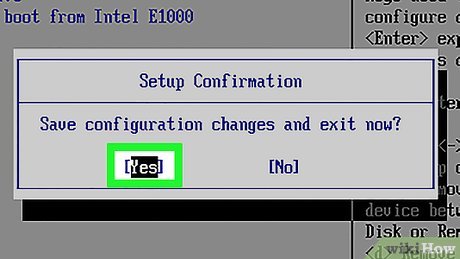
Save your changes and exit BIOS. Normally, you have to press a key to do this, so take a look at the keynote for the "Save and Exit" action.
You may need to confirm this step again by pressing another key.
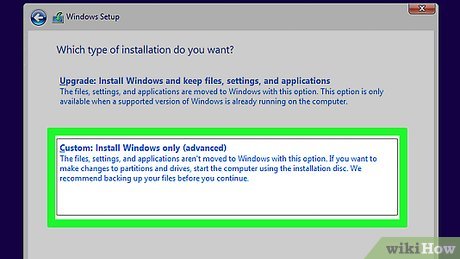
Proceed according to the instructions on the screen. Once the external hard drive is selected as the boot location, your startup program or service will open; Follow the on-screen instructions to open, install, or set up the program/service.
For example, if you are installing Linux, you will be asked to select your language and country, enter your user information, and so on.
If you have an operating system installed and set up on an external hard drive, once the BIOS setup is complete, the operating system will open.
Boot from external hard drive on Mac
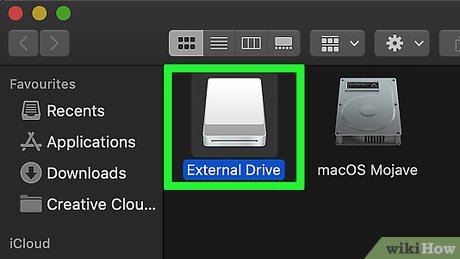
You need to make sure that the external hard drive is connected to your Mac computer. The computer and external hard drive must be securely connected by cable, and the external hard drive must be placed in a convenient place and not resting on the cable.
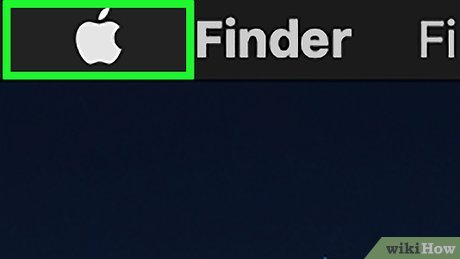
Open the Apple menu. Click the Apple icon in the upper left corner of the screen. A drop-down menu will appear.
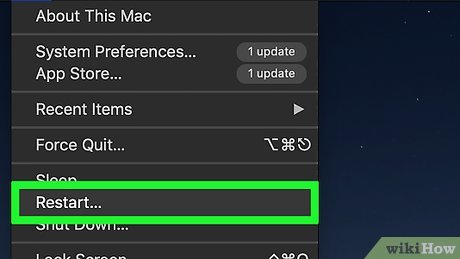
Click Restart… in the drop-down menu.
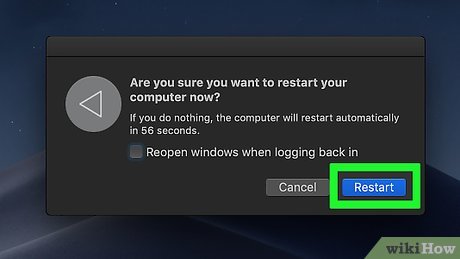
Click Restart when asked. The Mac computer will begin to restart.
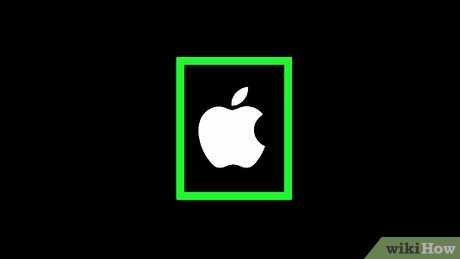
Wait for the screen to turn off. As soon as your Mac computer screen turns black, you can start holding down the key ⌥ Option.
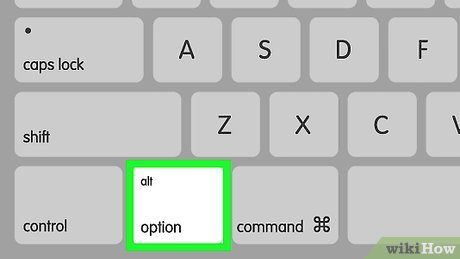
Hold down the key ⌥ Optionuntil the Startup Manager window opens.
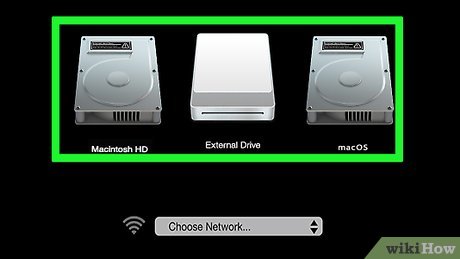
Release the key when the Startup Manager window appears. The window that appears in the middle of this screen contains a list of available boot locations.
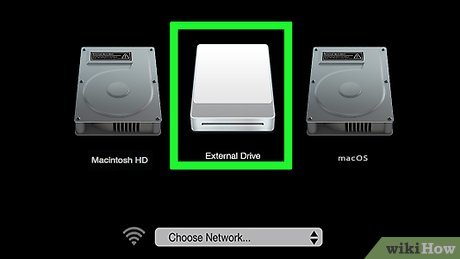
Select your external hard drive. Click the name of the external hard drive in the Startup Manager window.
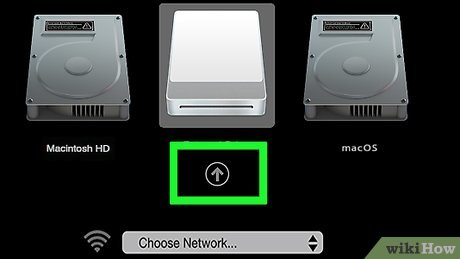
Confirm your choice. Click the up arrow below the external hard drive. The Mac will start rebooting from the external hard drive.
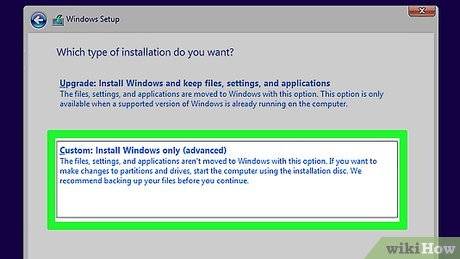
Proceed according to the instructions on the screen. Once the external hard drive is selected as the boot location, your startup program or service will open; Follow the on-screen instructions to open, install, or set up the program/service.
For example, if you are installing Linux, you will be asked to select your language and country, enter user information, and so on.
If you have an operating system installed and set up on an external hard drive, once the BIOS setup is complete, the operating system will open.
You should read it
- Dissection of hard drive components
- Pros and cons of using an external hard drive for PS4
- 5 ways to check hard drive effectively to help periodically check the hard drive
- Know about bad sectors on your hard drive
- Learn about HDD hard drive
- 5 hard drives with the best reliability
- Computer hard drive is fast, why?
- Choose to buy a portable hard drive
May be interested
- How to Connect an External Hard Drive to a Macbook Pro
 usually, to connect an external hard drive to your computer, you just plug it in and that's it. however, with a macbook pro or any other mac, the hard drive must be formatted according to a file system supported by the mac. this process will erase all data on the hard drive. if like most hard drives on the market, your hard drive has been formatted with ntfs format, then with mac os x, you can only read but cannot write data on this hard drive.
usually, to connect an external hard drive to your computer, you just plug it in and that's it. however, with a macbook pro or any other mac, the hard drive must be formatted according to a file system supported by the mac. this process will erase all data on the hard drive. if like most hard drives on the market, your hard drive has been formatted with ntfs format, then with mac os x, you can only read but cannot write data on this hard drive. - 7 simple ways to increase the life of your external hard drive
 if you've ever experienced a hard drive failure, you know it's not a pleasant feeling. we trust our drives to hold our most precious data and files, so it's important to keep them running and lasting as long as possible.
if you've ever experienced a hard drive failure, you know it's not a pleasant feeling. we trust our drives to hold our most precious data and files, so it's important to keep them running and lasting as long as possible. - What is a hard drive? There are several types?
 today most types of computers are large and small need to use hard drives, this is an extremely important part for computers, it has the ability to store all personal data and they are always accessed regularly. .
today most types of computers are large and small need to use hard drives, this is an extremely important part for computers, it has the ability to store all personal data and they are always accessed regularly. . - How to Copy Files to an External Hard Drive
 this wikihow teaches you how to copy files that are on your computer onto a portable hard drive, flash drive, or memory card. determine the connection type for the hard drive and your computer. virtually all external hard drives use a usb...
this wikihow teaches you how to copy files that are on your computer onto a portable hard drive, flash drive, or memory card. determine the connection type for the hard drive and your computer. virtually all external hard drives use a usb... - How to reformat an external hard drive does not cause data loss
 most people are quite adept at keeping backups of their valuable data on an external hard drive. but what happens if these hard drives are broken?
most people are quite adept at keeping backups of their valuable data on an external hard drive. but what happens if these hard drives are broken? - Advice on buying an external hard drive
 in fact, today's portable hard drives are quite popular with mobility as well as increasing memory capacity. however, the purchase of this product also needs to be carefully considered and depends largely on the need to use the data as well as the equipment that the user is in order to avoid the absence of it, but if so it's too much
in fact, today's portable hard drives are quite popular with mobility as well as increasing memory capacity. however, the purchase of this product also needs to be carefully considered and depends largely on the need to use the data as well as the equipment that the user is in order to avoid the absence of it, but if so it's too much - How to use an external hard drive with a Chromebook
 sometimes you may need to transfer files by moving the flash drive or have sensitive files that you don't want to store online. today's article will guide you how to use your flash drive or external hard drive with your chromebook.
sometimes you may need to transfer files by moving the flash drive or have sensitive files that you don't want to store online. today's article will guide you how to use your flash drive or external hard drive with your chromebook. - Notes when buying a computer hard drive
 in today's digital age, we often save a lot of important data on the computer, namely the hard drive. therefore, the problem of choosing to buy a hard drive is very important, ensuring appropriate use needs with affordable cost. if you are or are about to buy a hard drive for your computer, please refer to the notes that the general manager has provided below to make a wise decision.
in today's digital age, we often save a lot of important data on the computer, namely the hard drive. therefore, the problem of choosing to buy a hard drive is very important, ensuring appropriate use needs with affordable cost. if you are or are about to buy a hard drive for your computer, please refer to the notes that the general manager has provided below to make a wise decision. - 5 best external hard drives of 2024
 external hard drives come in all shapes and sizes, from portable to more compact but permanent secondary storage devices. of course, the best external hard drive will be the one that suits your needs!
external hard drives come in all shapes and sizes, from portable to more compact but permanent secondary storage devices. of course, the best external hard drive will be the one that suits your needs! - How to turn an old hard drive into an external drive?
 it's easy to turn an old (or new) hard drive into a perfect external drive to store your secondary files.
it's easy to turn an old (or new) hard drive into a perfect external drive to store your secondary files.










 How to Use an SD Memory Card
How to Use an SD Memory Card How to Update Graphics Card
How to Update Graphics Card How to Install Webcam for Computer or Laptop
How to Install Webcam for Computer or Laptop How to Install a Printer Without an Installation Disc
How to Install a Printer Without an Installation Disc How to Set Up a Canon Wireless Printer
How to Set Up a Canon Wireless Printer How to Set Up a Shared Printer on a Network
How to Set Up a Shared Printer on a Network